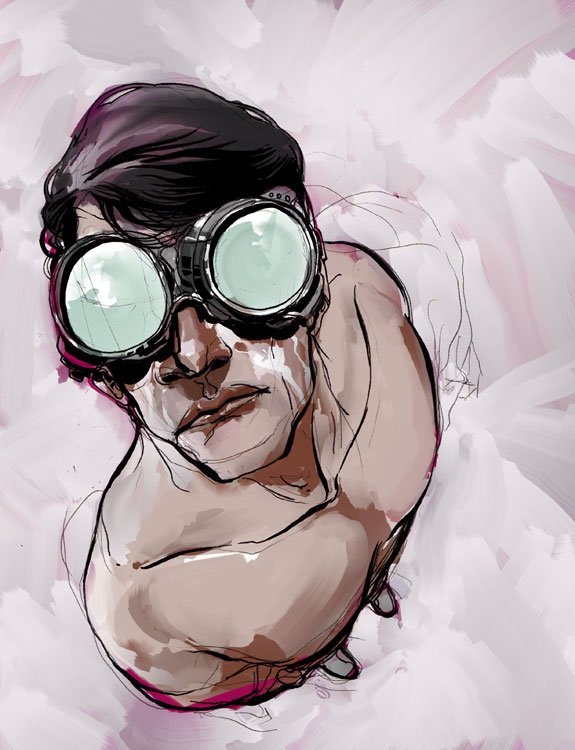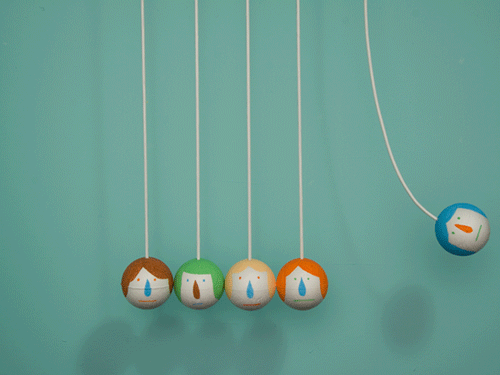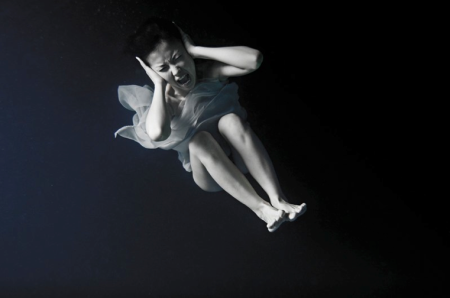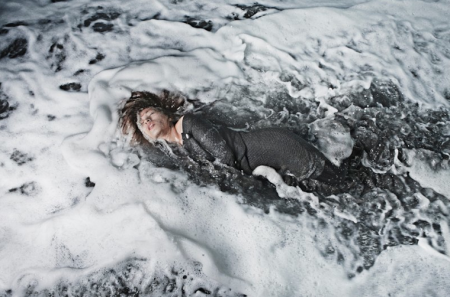Arkiv for 30. januar 2011
NATHALIE MIEBACH
Posted by R U M T O S S E T in KUNST on januar 30, 2011
Antarctic Tidal Rhythms
Reed, wood, styrofoam, data, 8’ x 6’ x 3’, 2006
Using a base of 24 hours, this piece converts various layers of data (Jan-Dec 2005) related to the gravitational influence of both Sun and Moon on the Antarctic environment. The inner structure converts sunrise/set and moonrise/set data into the woven structure, with every weave representing one hour. Additional data translated include tide readings moon phases, solar noon readings and the molecular structure of ice.
Twilight, Tides and Whales -Cape Cod ( February/ March 2006)
Reed, wood, data, 30”x18”x20”, 2006
This piece looks at the relationship between moon and sun rise and set, data, tidal and twilight readings taken in Provincetown, MA, and whale sightings along the New England Coast during the time frame of February – March 2006. All of the data comes from the U.S. Naval Observatory, NOAA (National Oceanic & Atmospheric Administration) and the Northeast Fishery Science Center.
Boston Tides
Reed, wood, data, 6’x 6’ x2’, 2006
Using a base of 24 hours, this piece converts various layers of data (Jan-Dec 2005) related to the gravitational influence of both Sun and Moon on tides recorded at Boston Harbor. The inner structure converts sunrise/set and moonrise/set data into the woven structure, with every weave representing one hour. Additional data translated include tide readings, moon phases and the solar path in relation to the horizon.
Antarctic Explorer – Darkness to Lightness
Reed, wood, plastic, data, 4,5’ x 3’ x 2’ , 2007
A portable data device for the Antarctic Explorer, this piece explores the transition from complete darkness in June to 24 hour sunlight in October. Data translated include weather patterns, temperature variations, barometric pressure, wind data, azimuth of the sun, sunrise in relation to cardinal directions, tides, moon phases, moonrise and sunrise. Using a base of 24 hour, every weave represents one hour.
Warm Winter
Reed, wood, data, 6’x 5’x6’, 2007
Using a base of 24 hours, this piece converts locally collected data (at Herring Cove) , with data from regional buoys (source: Gulf of Maine Observation System) and historical data (source: www.wunderground.com, NOAA and U.S. Naval Observatory). Data converted includes temperature (air, water, soil), wind speed and direction, tides and moon phases. The time frame translated is Dec 2006 – January 2007.
Wind Anemometer: Herring Cove, Cape Cod
Reed, wood, PVC, data
68”x40”x37”, 2008
This sculpture functions as both an anemometer to be used on the beach to measure wind, as well as a sculpture on which my own collected data is recorded. Looking purely at the effects of wind in a specific location on Cape Cod (Herring Cove Beach), I translate data of living systems or other weather indicators that are affected by the wind.
Shouldering Weather through New Urban Frontiers
45”x45”x27”
Wood, data, reed
2009
Reed, wood, data, 16’x15’x15’, 2009Urban Weather Prairies is based on data collected in Omaha, Nebraska, during a 2-month period (May /June 2008), while I was an Artist in Residence at the Bemis Center for Contemporary Arts. I chose to translate the data I collected in the format of an orchestra as a way to more truthfully articulate the somewhat idiosyncratic way I was making sense of my daily weather observations. Just like each instrument in a symphony plays part of the score, each sculpture and wall piece tells part of the story, with the entirety of the piece coming together through the larger behavioral patterns that slowly emerge over time. The wall space uses the rectangle as varies maps of Nebraska or urban centers of Nebraska.
Artist Statement
My work focuses on the intersection of art and science and the visual articulation of scientific observations. Using the methodologies and processes of both disciplines, I translate scientific data related to astronomy, ecology and meteorology woven sculptures. My method of translation is principally that of weaving – in particular basket weaving – as it provides me with a simple yet highly effective grid through which to interpret data in three-dimensional space. By staying true to the numbers, these woven pieces tread an uneasy divide between functioning both as sculptures in space as well as instruments that could be used in the actual environment from which the data originates.
Central to this work is my desire to explore the role visual aesthetics play in the translation and understanding of science information. By utilizing artistic processes and everyday materials, I am questioning and expanding boundaries through which science data has been traditionally visually translated (ex: graphs, diagrams), while at the same time provoking expectations of what kind of visual vocabulary is considered to be in the domain of ‘science’ or ‘art’.
For my most recent project called “Recording and Translating Climate Change”, I gather weather observations from specific ecosystems using very simple data-collecting devices. The numbers are then compared to historical / global meteorological trends, before being translated into sculpture. By examining the complex behavioral interactions of living/non-living systems between weather and an environment, I hope to gain a better understanding of complexity of systems and behaviors that make up weather and climate change. Lately, I have also started to translate the data into musical scores, which are then interpreted through sculptures as well as through collaborations with musicians. My aim is twofold: to convey a nuance or level of emotionality surrounding my research that thus far has been absent from my visual work and to reveal patterns in the data musicians might identify which I have failed to see.


























